This is part 3 of Quickstart Guide: How to boost your personal productivity with A.I. tools
Want some good news? There are no problems in life, only decisions to be made. Relieving, isn’t it? Wait, it gets even better. Decision is simply evaluating the options, and picking the best one.
Here are A.I. tools that would make some of your everyday decisions as quick and painless as possible.
… getting from point A to point B
You probably don’t need me to explain you how to learn about your options for getting someplace, but I’ll do it anyway. Tap “Google Maps” icon, type your destination, tap “Navigation” arrow. Done.
But accomplishing this takes more than solving (you’ve guessed it correctly) classic A.I. task of planning. How do you think it knows where on the map is the address you typed? Dig this – it recognizes street numbers on Street View images. Same goes for business names. How about estimating the time of arrival (ETA)? There might be a traffic jam on your way 60 miles down the road now, but it doesn’t mean that it’ll be still there in an hour, right? So, their A.I. predicts the traffic situation. And so on and on. But you don’t have to worry about all this – just note the time of your trip to see how damn accurate is the ETA!
Bonus: Google Assistant even notifies you in advance of the ETA for your upcoming commute trip. Saved me from my daughter’s righteous anger a few times when subway was about to take 40 minutes – instead of usual 20 minutes!
You might have noticed that one of the transportation options offered by Google Maps is taxi. Did you dare to click it? If not, go ahead, do it – you’ll be surprised how affordable it is! You can thank A.I. for that as well. Employed by our friends at Uber and Lyft, it optimizes the hell out of ride-hailing – from suggesting pickup and drop-off points to identifying suspicious or fraudulent accounts. And pricing, of course. So, even though you are unlikely to guess the price even for a repeating trip (and I usually get quotes from both Lyft and Uber before picking one or the other), the app would let you know the total fare – and stick to it – before you request the ride.
Bonus: A ride is even more affordable if you are willing to walk a block or two to the pickup point – check out Uber express POOL or Lyft Shuttle.
… your parking options
Ok, you drove for a while, and finally you have arrived. But you travelling adventure might have just began… In pretty much every downtown, finding car parking is murder, and you want all help you can get. Luckily, there is Robin. Just wake her up with light tap, or friendly hand-waving, and ask what you need. And don’t rush to make a compromise – ask for more options if what you hear first is not that appealing.

Bonus: Have you noticed the fancy way you activate Robin? It’s because it is designed to be your ‘eyes-free’ assistant on the road. Using only your voice and hearing, you can flip through your email and text messages, check your Facebook and Twitter updates, get personalized traffic updates, and much more. Oh, and check out their YouTube videos – they are hilarious!
… an awesome event you were unaware of
All these great means of transportation beg one question: Where do you want to go? No matter if you are facing too many or too few choices, Robby comes to your rescue. Relentless web crawler and sensitive learner of your taste and schedule, it finds events you’d hate to miss! No matter where you keep your schedule – Google Calendar, iCal, Office 365, Facebook Events, Trello, you name it – Robby can learn from it. With 18 event categories – from fashion to fundraising to family – Robby fine-tunes his understanding of what types of gatherings you like the most. Of course, like with any learning, it will take Robby a few hits and misses to get it right, but when it does get it right, it’s true delight!
Bonus: You don’t need to sign up to get a sense of upcoming gatherings in your favorite city, like start up events in San Francisco, jazz concerts in Brooklyn or street festivals in Barselona.
… a good movie to watch
If you are staying home, there is a slight variation of the eternal question: What are we watching tonight? Storage media, format and providers come and go (hi Blockbuster, bye), the question stays. It would be ridiculous for A.I. not to try to answer it, wouldn’t it?
Netflix showed the way for A.I. recommendation systems back in 2009 with its famous $1M competition. Today, over 80% of the TV shows people watch on Netflix are discovered via the engine (and Netflix valuation itself grew ~4000% since then). For now, it’s still the humans that tag the content according to the nuances of the storyline, but A.I. does the heavy-lifting of grouping more than 250M profiles into a couple of thousand of “taste groups” that drive the recommendations. Give it a try, it’s good!
If you are more into movies, Movix.ai would make a suggestion based on few examples of movies you like and dislike. No apps to install, and no accounts to create – just go to https://movix.ai/discover and up-vote or down-vote a few movies. You can also filter out some genres or keywords – just open details of a movie and thumb-down the aspects of it that you don’t like.
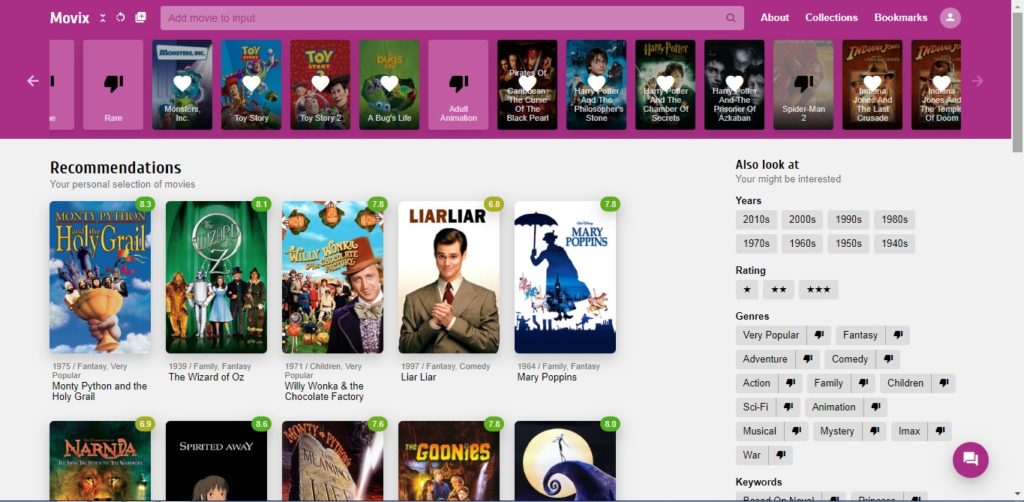
Bonus: your preferences are encoded straight into URL, so you can bookmark one link for a family movie night recommendations, and another, say, for inspiring your inner action hero – without having the preferences influence each other.
… your soon-to-be favorite songs
With music, these days it’s even easier than with movies – just ask your favorite Spotify-linked favorite voice assistant “Play something I like”, and voila! Just be sure to pay back the favor and give some feedback about the piece you just experienced – something simple like “Play more like this” or “Play something different” would go a long way, and before you know it, your playlist will be as perfect as you are.
A small problem with Spotify is that they apparently don’t use A.I. (Any Intelligence 😉 while checking if you’re eligible to join Premium for Families plan, and that causes some users to switch to Apple Music. If you are one of those users, fear not – Siri as your Personal DJ does as good job learning your unique musical taste.
Bonus: With Siri, you can ask to “play the song with the lyrics… (and then some phrase from a song)” to summon the tune with a catchy line. Try to “play the song with the lyrics cannot be shook”, it’s good.
… that thing I just came across
‘Cause sometimes it’s the other way around – you come across something you really like (or really don’t like), and you just need to know what it’s called.

If it’s song playing on your Google Home play list, it’s easy – you just ask, “Ok Google, what is it playing?” and you’ll know right away. But what if it’s on the radio in your car? Well, it’s actually not that much harder. Just open Shazam on your smartphone and “Tap to Shazam”. It’ll listen to the song for a few seconds, and tell you exactly what it is.
Bonus: It’ll give you links to all the places on the interwebs Apple properties where you can lay your little sweaty hands on a copy of the masterpiece.
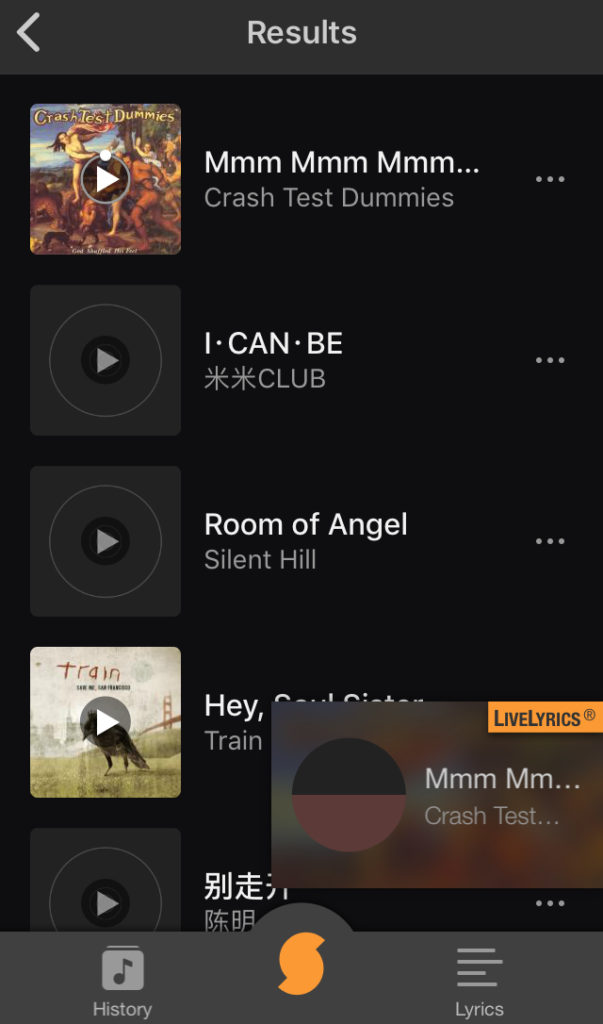
What if the song is playing in your head only? If it has some words in it, you can summon Siri or Google to identify it. But what if all you can do is only hum it? Actually, this is good enough. SoundHound would take your reproduction of a melody and connect you to the original. If you also happen to have some lyrics stuck in your head – the better, just type it or sing it, and SoundHound would do the rest.
Bonus: It works the other way around too – once you have a song in your SoundHound library, you can play it for free, see the lyrics, and even sing along, with the lyrics being synced up with the music!
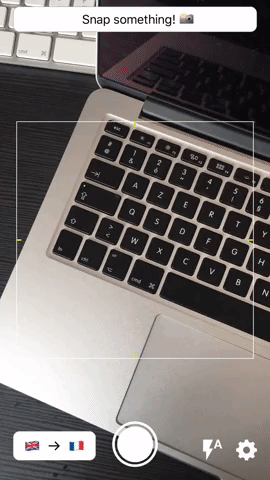
How about identifying everyday objects? There is an app for that as well. I hope you’ll never find yourself in a situation where you just cannot remember how that thing you stare at is called. But if you do, just pretend that you need to know how it’s called, say, in French, snap the picture of it with Polyword app, and voila – its name is shown in French, and to your big relief, in your mother tongue.
Bonus: The app is open-sourced, so it’ll help you to learn not only a new language, but also how to make A.I. apps.
I wish I could as easily identify paintings, but apparently not all copyright holders are not happy with people taking pictures of artworks with Smartify. Thankfully, Mother Nature doesn’t mind at all, so here it is – PictureThis “identifies thousands of plants, flowers, and trees in under a second with advanced AI. Simply take/upload a picture, and it immediately shows you its name, a quick description, and more beautiful photos.”
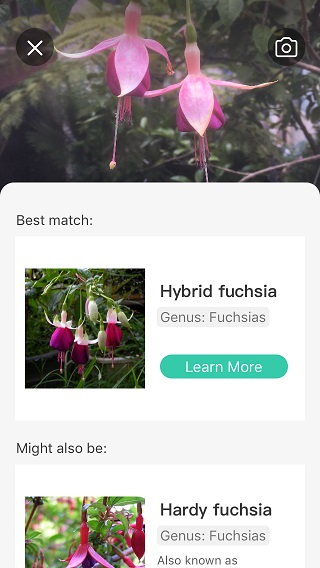
Bonus: PictureThis comes with 3+ million community of plant lovers and horticulture specialists.
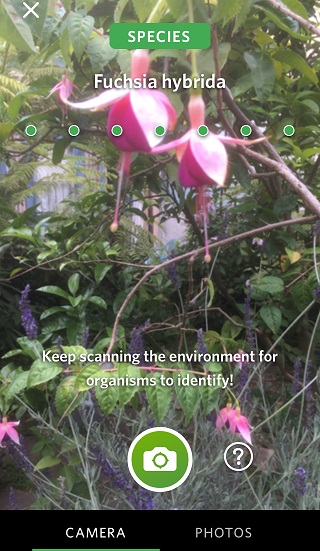
If you start identifying plants around you, chances are that you notice animals around you as well – animals other than mosquito and squirrels. And chances are that you would want to identify those animals as well. No problem – just open Seek by iNaturalist app and point it to the creature. That’s right – you don’t even have to take a good picture of it, which might be tricky with things that tend to move away from you as quick as they could. Just scanning your surroundings with the Seek Camera would let it identify organisms using the tree of life. The app is kid-safe – no registration is required to use it, and no user data is collected. It does need to know your geographical location though – that helps a great deal with correct identification of the species. But the GPS data is obscured to protect your privacy, and your precise location is never stored in the app or sent to iNaturalist.
Also, just specifying the location in the app gives you a sneak peak in the great variety of plants and animals you are likely to encounter there. You could even select a sub-tree of life you’re most curious about – like fungi, reptiles, arachnids etc.
Bonus: You still can take pictures of the living things you found with the app – observations submitted to iNaturalist.org help improving the technology (and earn you badges 😉
… pretty much anything – as long as you can describe it
Here is what I get when I just Google the picture of the plant above:

Not bad. But voice is the original media, and remains the most natural way to provide input. That’s why voice assistants like Google (Home) Assistant, Amazon’s Alexa and Apple’s Siri are so popular. They became possible thanks to advances in A.I. research area called NLP (Natural Language Processing).
“Googling” is pretty much synonym to “get information about”, and Google Assistant is usually pretty good at answering natural language questions. Where it usually fails is the follow-up questions. That’s where Hound picks it up. Try it – searching it does feel like a conversation with a smart and knowledgeable assistant.
Bonus: Both SoundHound and Hound are powered by Houndify – platform for “voice-enabling anything [with an internet connection]“. Keep that in mind if you’d ever want to give your customers voice access to your product – without them having to mention first Google, Alexa or Siri.
… my spending habits
Googling for info is convenient, but it would be creepy to see your bank balance in Google search results, wouldn’t it? And yet, it would be convenient to get info about your finances using the same natural language interface Google offers. Enter personal financial assistants.
Note of caution: all personal finance products require access to your financial information like bank accounts and credit cards. Before using any of these make sure that you are familiar and comfortable with the product’s security and privacy policy – any sloppiness here may result in a considerable financial loss. That actually applies to all products that collect any information about you – some critical mass of personal information allows a crook to perform “identity theft” on you, which is usually results, again, in considerable financial loss. Just a reminder of a common sense practice that is not that common, unfortunately. Now back to our regular programming.
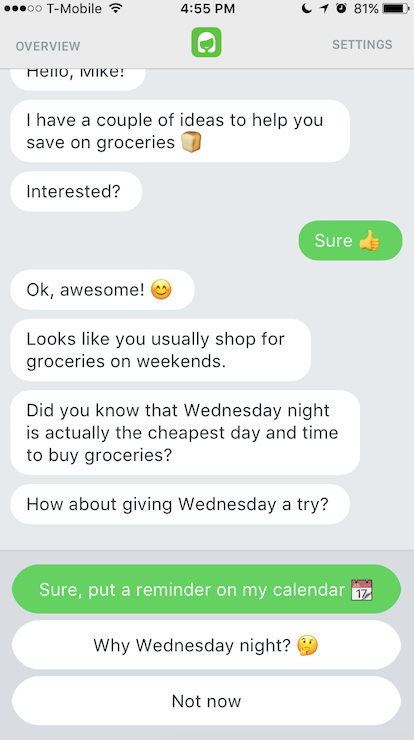
Budgeting is complex, even though it boils down to a simple question: “Can I afford this thing?”. Olivia answers exactly that question. Let her track your bank and credit card transactions, and she will identify your recurring bills and spending trends – all in order to figure out how much you can spend today and till the end of month. While at it, she gets some actionable insights about the ways you handle your money, and also finds the ways to motivate you to take action on these insights.
Bonus: You can ask Olivia the question – as well as all other questions you might have about your money – via a familiar chat interface. Just make sure first that you are chatting with the Olivia.

I wonder where this “track” is going…
In case you prefer more dashboard-like interface, check out Clarity Money. Here, there is nobody to chat with – you get at-a-glance view of your financial status and month-to-date summary, with the option to drill down to transactions level, of course. Its systematic approach is more on the basic level – from identifying recurring charges (runaway subscriptions?) to setting up recurring savings deposits easily. And if you fix mis-categorized expense, it takes the hint.
Bonus: You can use it from both mobile app and web browser – the dashboard gracefully takes advantage of all screen real estate available.
… my health condition
Like good technology, good health usually doesn’t draw much attention – it’s just there helping us to get where we want to be. Here is how A.I. technology can help you restore and maintain your health.
Say, you woke up not feeling well. Do you just keep going with your schedule? Or do you take it easy for one day? Or rather go see a doctor? Ada is symptom checker that helps you make this decision. Just tell her what’s bothering you, and it will ask you a few questions to clarify your symptoms and narrow down to the most likely cause. It then explains (in a compact graphical form) which symptoms (and how significantly) contributed to the diagnosis, as well as the confidence in the diagnosis (for example, “8 out of 10 people with this symptoms have this condition”). This step-by-step approach seems a better alternative to, say, browsing WebMD.com as it is more focused, and results in a diagnosis that is most likely (rationally) rather than the least (or the most) scary (emotionally).
Bonus: It keeps history of the assessments, that allows not only more personalized analysis in the future, but also keeps track record for an analysis of your own. (For example, do you know if there is any correlation between you getting seasonal flu shots and you getting the seasonal flu?)
For those of us who value an ounce of prevention above a pound of cure, there is Viome. Putting a scientific spin on “you are what you eat” mantra, they offer analysis of the nutrients and toxins being produced by your gut microbiome (bacteria, viruses, fungi, yeast and mold). And, what’s more important, they give you “precise and personalized recommendations of foods and nutrients to heal your gut and keep you free from chronic conditions.“ The recommendation comes in the shape of four categories of food – what to indulge in, what to enjoy, what to minimize and what to avoid. Very clear and actionable! It even prepares your personal top super-foods list of what you’d benefit the most from.

Bonus: It comes with Coach Vie, an A.I. companion app that guides you trough both the results of the analysis and the nutrition recommendations.
And in case you’re looking for the most comprehensive analysis of your wellness – expressed as your biological age – check out [Young.AI]. They see your body and all of its organs as clocks, some of them aging faster than others. And as usual, your life expectancy is limited by the life expectancy of your most “aged” subsystem. Share your health data with the service, and it’ll help you not only find your weakest “clock”, but also manage your lifestyle and even design your own interventions.
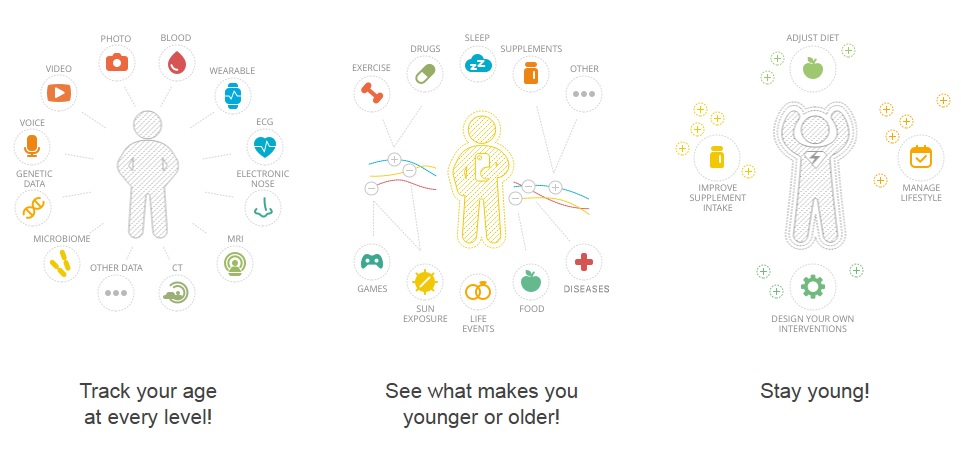
Bonus: This service, developed by Insilico Medicine, recognized by as one of top promising A.I. companies of 2018, and based on peer-reviewed research.
… good options at a restaurant
Eating healthy while eating out is complicated, to put it mildly. It’s easier to stick to the healthiest option in the place you frequent (otherwise, why would you choose to go there regularly, right?) But what if you ventured into a new venue? With a crowd where you’d rather not turn picking the entree into an hour long research? Wouldn’t it be awesome to know all the good options with a single glance at the menu? Now you can.
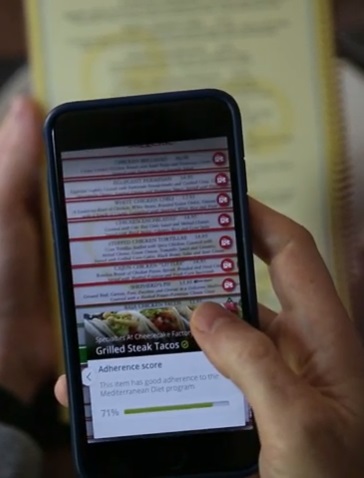
Just open Suggestic app on your phone, point it at any restaurant menu and voila: overlaid on top of the menu you see what’s good for you – according to your diet, biology, preferences and goals. For the calories trackers out there – you can log your meal with a single tap.
Bonus: It instantly converts you from killjoy picky-eater into a cool A.R. master. (A.R. stands for “augmented reality”, where a real-world view is overlaid – or “augmented” – with a computer-generated information.)
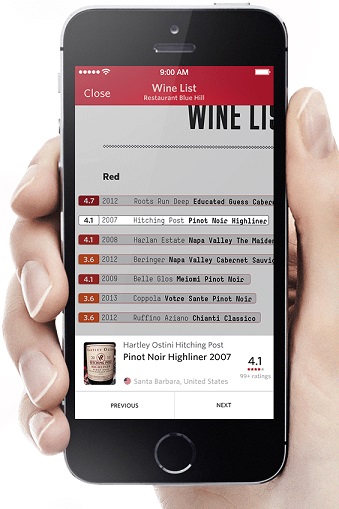
You don’t have to be a food nerd to use A.R. at a restaurant. If you care in the least about what you drink, you can use A.R. magic with wine lists as well – just scan it with Vivino app to see the raitings and review of each wine. And if you liked a particular wine, don’t forget to take a picture of the label on the bottle – over time you’ll build a visual profile that any good server would understand. As Tim Ferriss puts it, “… when you are asked “What type of wine do you like?” in a restaurant, you simply show them your [Vivino pie chart] and ask them to pick a wine in your budget based on that: “I’d love for you to pick the wine.” It also removes all of the back-and-forth and guesswork involved, and it usually ends in a far better wine – for you.”
Bonus: It instantly transforms you from an amateur wine drinker into a pro.
And if you need help (re)starting your relationship with wine, Bright Cellars will help make you educated guess about your next candidate. I mean, you might know that a wine has “floral notes of violet and lilac with slight earthy notes”, but if you are like me, it wouldn’t give you a slightest idea whether you are going to like it or not. On the other hand, you are likely to know if you prefer dark chocolate to Snickers or grapefruit juice to tomato juice. And this is the kind of questions Bright Cellars’ quiz is using to guess your next favorite wine.
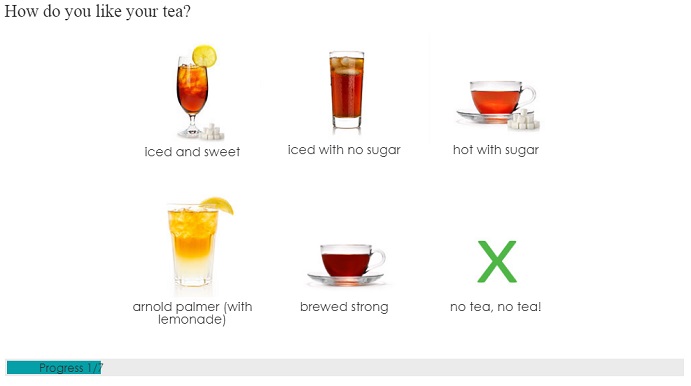
Bonus: If you are serious about finding the wine(s) of your life, you can close the feedback loop with Bright Cellars subscription service, where they send you monthly the wines that ranked highest for you. Taste, vote, repeat.
Scent Trunk took the idea one step further. You don’t have to stick with what is out there, you can actually create the option that is uniquely suits you! You unique perfume, I mean. I know, it’s not exactly about food, but you can see this as a help with a decision you make before going to a restaurant. Anyway, Scent Trunk sends you kit with 6 basic scents, and based on your ranking of each of these, composes a fragrance exclusively for you.

Bonus: This unique perfume is designed for you personally by AP (artisan perfumers), not A.I.
Now, let’s spice it up with how to get guided by A.I. while… →